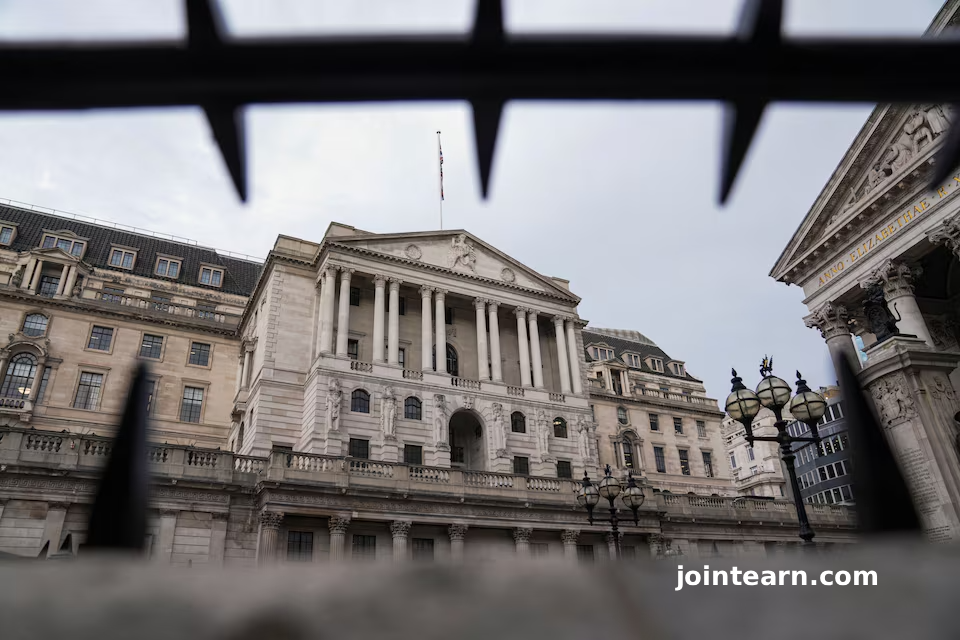
LONDON, November 6, 2025 – The Bank of England (BoE) has publicly disclosed, for the first time, the individual views of its Monetary Policy Committee (MPC) members following the latest interest rate decision, revealing a closely divided outlook on the UK’s economic future.
In a narrow 5-4 vote, the MPC opted to keep the Bank Rate at 4%, a decision reflecting ongoing uncertainty over inflation trends and the pace of economic recovery. While most economists had expected a 6-3 split favoring a rate hold, the close vote underscores differing assessments of inflationary pressures and labor market dynamics among policymakers.
MPC Members Who Voted to Keep Rates Unchanged
Andrew Bailey, Governor
Governor Andrew Bailey emphasized caution, noting that while inflation in September held at 3.8%—below the BoE’s forecast of 4%—it was premature to cut rates. He highlighted that labor costs remain high and wage growth, though slowing, could stabilize at elevated levels.
“Recent evidence points to building slack in the economy, and the latest CPI data were promising. But this is just one month of data… I would prefer to wait and see if the durability of disinflation is confirmed in upcoming economic developments this year.”
Clare Lombardelli, Deputy Governor
Lombardelli expressed concerns about underlying inflationary pressures, particularly amid structural labor market changes that may reduce economic slack. She suggested that while weaker consumption trends are notable, maintaining policy credibility is essential before reducing rates.
Huw Pill, Chief Economist
Pill argued that previous rate cuts may have been too rapid, favoring a slower pace to mitigate risks from persistent underlying inflation. He cited structural changes in wage-setting behaviors as a source of continued inflationary pressures in the UK.
Catherine Mann, External MPC Member
Mann stressed the importance of controlling inflation expectations, particularly given the potential for administered prices to rise and household inflation expectations to remain elevated. She urged a firm stance to return inflation to the BoE’s 2% target.
Megan Greene, External MPC Member
Greene highlighted upside inflation risks and slowed disinflation, warning that rapid rate cuts could obscure whether inflation trends are policy-driven or structurally inherent.
MPC Members Who Favored a Rate Cut to 3.75%
Sarah Breeden, Deputy Governor
Voting against the majority, Breeden argued that some slack in the labor market would continue to restrain wage growth. She supported a cautious rate cut while emphasizing the need for evidence-based policy adjustments.
Dave Ramsden, Deputy Governor
Ramsden advocated a gradual reduction of borrowing costs, noting that downside risks to inflation were more prominent compared to previous assessments, especially as uncertainties surrounding disinflation have lessened.
Swati Dhingra, External MPC Member
Dhingra pointed out that disinflation was on track, and there was limited risk of second-round effects from food prices. She argued that rates should have been lower already, warning that overly restrictive policy could exacerbate weak demand and limit economic supply.
Alan Taylor, External MPC Member
Taylor noted that borrowing costs were too restrictive and that wage growth and inflation trends suggested a lower terminal rate. He stressed that inflation could fall below the 2% target if rates remained unchanged for too long.
Economic Outlook and Implications
The BoE’s divided vote reflects the delicate balancing act between supporting growth and controlling inflation. Key economic indicators—including labor market slack, wage growth, and consumer price inflation—will play a decisive role in shaping future policy.
Analysts suggest that the Bank of England’s November decision signals a cautious approach, with policymakers closely monitoring the economy for signs of sustained disinflation before implementing further rate cuts. The next MPC meeting is expected to provide additional clarity on whether the UK is on a path to gradually lower borrowing costs or maintaining a firm stance to contain inflation.


Leave a Reply